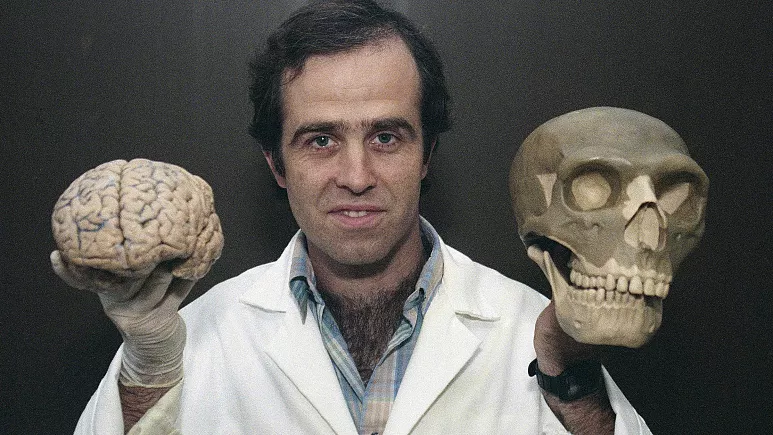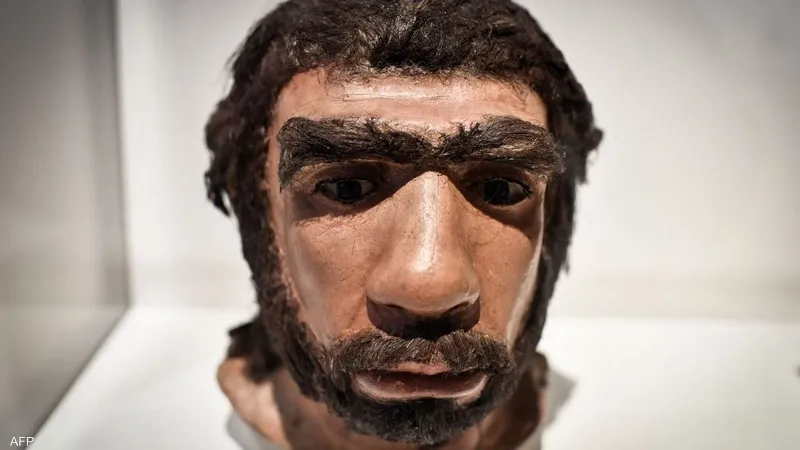A scientific study confirms that the modern human brain appeared a million years later than it was thought

But the new study concludes that this evolution occurred much later, between 1.7 and 1.5 million years ago. Zollicoffer was able to reach this result with the main author of the study, Marcia Ponce de Leon, a large number of fossilized skulls from Africa, Georgia and Java, Indonesia.
A recent scientific study revealed that the human brain did not begin to reach what it is today two and a half million years ago, as was previously thought, but much later, specifically 1.7 to 1.5 million years ago, that is, after humans first spread out of Africa.
Thus, the human race, which includes extinct species (such as Homo erectus and Neanderthal man) in addition to Homo sapiens, did not develop its brain in a manner similar to the development of the brain of modern man . Anthropologist at the Swiss University of Zurich Christoph Zollicofer, who is one of the participants in the study, which was published Thursday in the prestigious "Science" magazine, explained that the researchers sought to answer a question that was still vague: "When did the brain structures that make us human evolve?" "Until now, people believed that the brain, close to the human brain, evolved in the beginnings of the human race, about 2.5 million years ago," Zollikofer told AFP .
But the new study concludes that this evolution occurred much later, between 1.7 and 1.5 million years ago. Zollicoffer was able to reach this result with the main author of the study, Marcia Ponce de Leon, from a large number of fossilized skulls from Africa, Georgia and Java, Indonesia.
Since brains themselves do not ossify, the only way to monitor their development is to study the marks they leave inside the skull. Therefore, scientists resorted to scanning fossils, which enabled them to create a virtual picture of what they contained long ago, in a way similar to filling the inside of a mould.
What characteristics did they then look for to determine the degree of "newness" of the brain?
"Some areas of the frontal lobe (in humans) are much larger than the corresponding areas in great apes," Zollikoffer explained. One of them is, for example, Broca's area associated with language. This enlargement resulted in the whole brain being moved back "and this backward shift can be seen on the endofossils over time, by noting the impressions left by the fissures in the gyri."

By studying skulls from Africa, the researchers were able to discover that the oldest ones, dating back more than 1.7 million years, were in fact characteristic of the frontal lobe of great apes.
Zollikfer described this first result as "a big surprise". He explained that this meant that the human race "began to have the ability to walk on two legs, and not with a modern brain," concluding that the development of the brain "has nothing to do with the feet."
He added, "From now on, we know that the first representatives of our species in our long history of evolution (...) were bipeds that could walk, with a brain close to that of great apes."
In addition, African fossils dating back more recently, 1.5 million years ago, revealed the characteristics of the brains of modern humans. This means that the development took place between these two dates in Africa, according to the study.
This conclusion was confirmed by the emergence of more complex tools during this era, which are characterized by having two identical sides. Zollikfer explained that this is "no coincidence, because what is known is that the areas of the brain that develop during this stage are those used in complex work, such as making tools."
?Why did this development happen
The researchers hypothesized that an apparent connection developed between cultural innovations and physical changes in the brain, each of which stimulated the other. As for the second surprising result of the study, it came from the examination of five fossilized skulls found at the Dmanisi site in present-day Georgia, dating back between 1.8 and 1.7 million years, and they are well-preserved copies. And it turns out that the skulls belong to primitive brains.

"The common belief was that dispersal out of Africa required a large modern brain," the anthropologist explained . "We can show that these brains were neither large nor young, and that the groups were nonetheless able to leave" this continent, he added. Finally, fossils from Java were characterized by recent characteristics. Therefore, the researchers believe that a second dispersal out of Africa took place.
"The first dispersal was of the primitive-brained population, then the modern brain evolved in Africa, and these people dispersed again," until they reached Indonesia , Zollikofer said . "This is not a new hypothesis (...) but for the first time we have fossils that prove it," he added.
Source : websites

